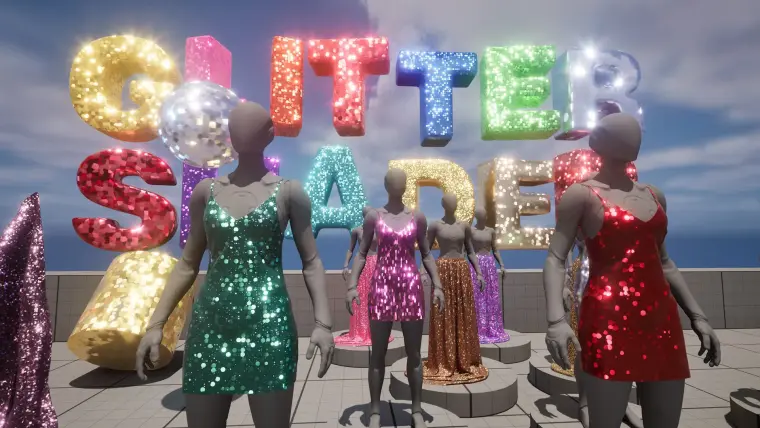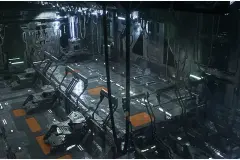
Glitter Shader
Glitter Shader is a stylized emissive shader for Unreal Engine 5.4 and above.
The material functions included generate medium to large size glitter procedurally and then use emissive to simulate sparkle and shine.
Features
Material functions included to:
Create a glitter material to use as an Overlay Material.
Add glitter to an existing material as a material layer.
Add glitter to an existing material by merging material attributes.
Glitter is generated procedurally using Voronoi 3D noise.
The shape of each glitter is a small dot.
Generate glitter in Local 3D Space (independent of UVs)
Generate glitter in UV Space (for skinned mesh such as characters).
Change the size and amount of glitter.
Change the brightness and sparkliness of glitter.
Important Notes
Mobile platforms are NOT supported due to the use of procedural noise.
Use on Landscapes is NOT supported. See the Glitter Shader User Guide FAQ section for details.
This is largely an emissive effect and does NOT change based on lighting or shadows.
Settings must be adjusted manually in the material to match an environment's lighting.
Settings must be adjusted through script by adding a Custom Primitive Data parameter to the material and using trigger volumes if it is desired that the glitter get darker when in shadow. See the Glitter Shader User Guide Tutorials section for details.
Anti-Aliasing method must be TAA or TSR. Other methods, including none, are NOT supported.
Shading Models that are NOT supported are Hair, SingleLayerWater, Thin Translucent, and Material Expression.
It is recommended to use the Convolution Bloom method in Post Process for the most sparkly results.
Technical Details
Includes
Material functions to create a glitter material or to add glitter to existing materials
Example materials which explain implementation
Demo Content Includes
GlitterDemo level which provides an overview showing examples and features
A variety of material instances with different parameters showing different looks
An implementation of glitter on the player character using Quinn
An example of using blueprints to adjust emissive brightness using Custom Primitive Data
To Use the Shader
Use the material function MF_Glitter_MakeGlitter to create an Overlay Material
Use the material function MF_Glitter_MakeGlitterLayer to add glitter to an existing material as a Material Layer
Use the material function MF_Glitter_MergeGlitter to add glitter to an existing material by merging material attributes
Material Info
Number of Material Functions: 10
Number of Materials:
4 Example materials with instructions in the comments
7 Master materials used in the demo content
Number of Material Instances:
53 Example material instances used in the demo content
Number of Textures: N/A
Supported Development Platforms
Windows: Yes
Mac: No
Documentation Link
https://www.nightshiftstudios.com/glitter-shader-guide










